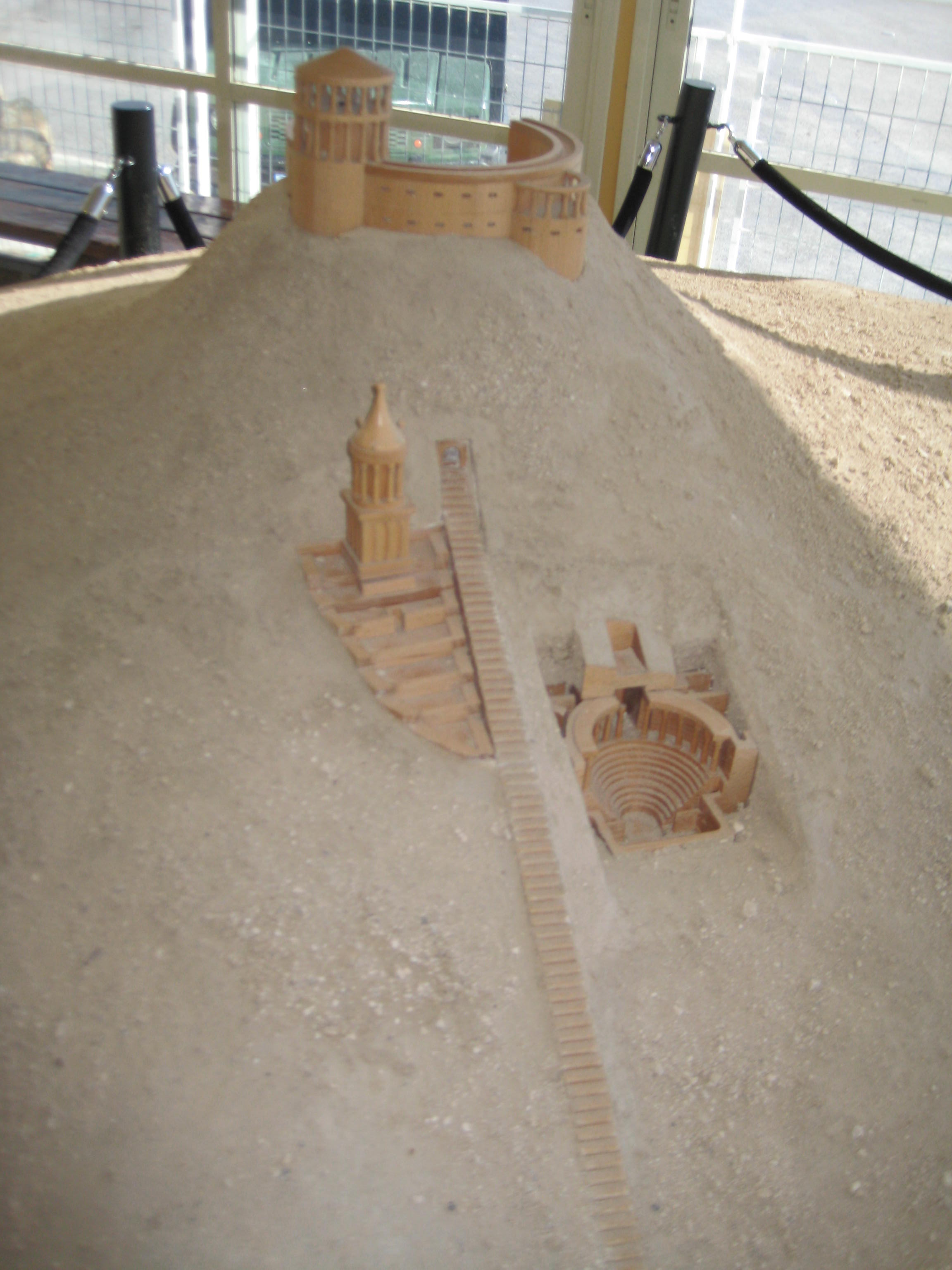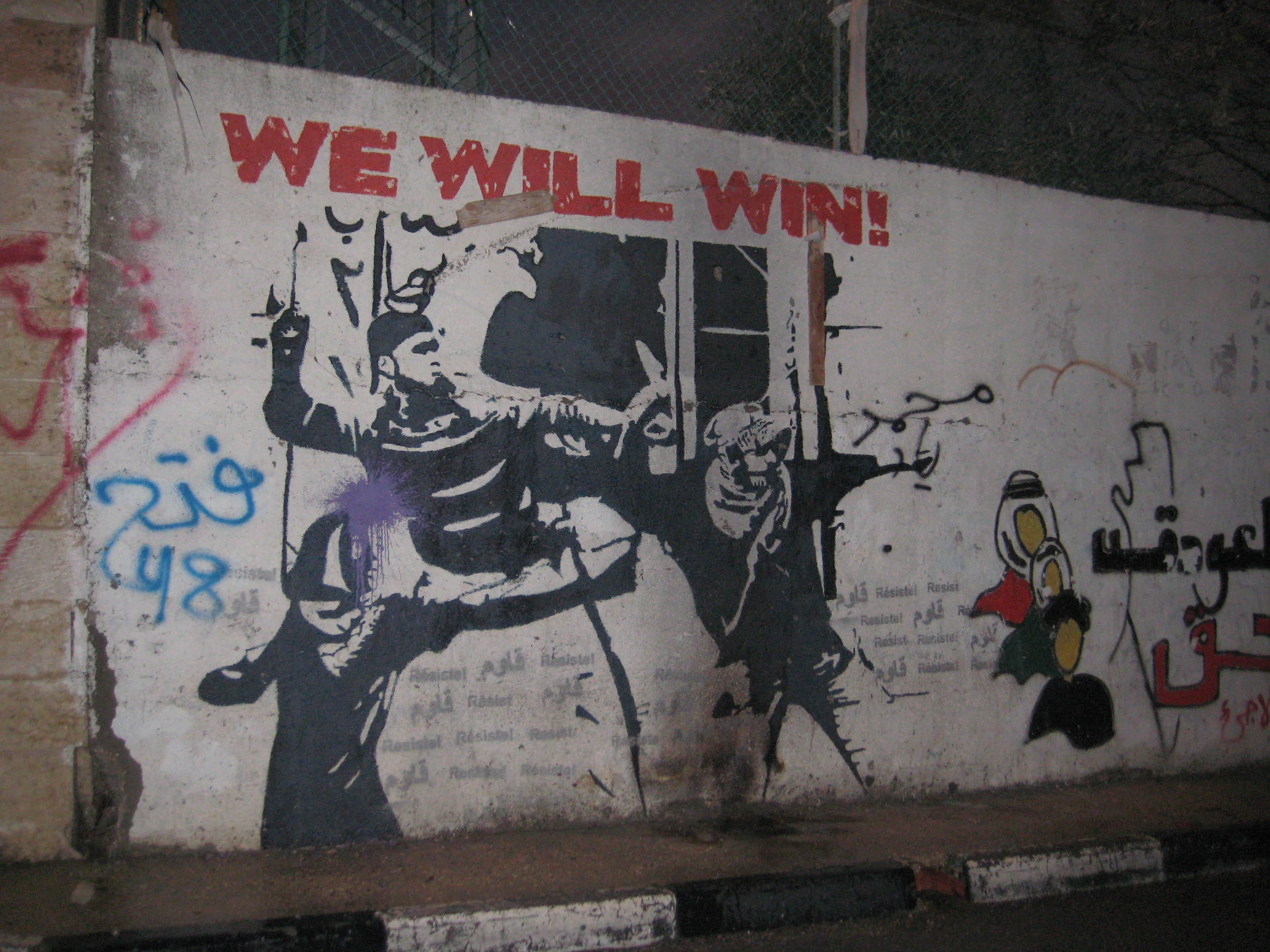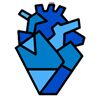Welcome to Part II of my Holy Land Journey, Day 5. Today’s post is brought to you by Stars & Bucks Coffee.

Lots of ground to cover, from an ancient palace in ruins to a present-day refugee camp in ruins to a homemade meal with new friends. Here’s how Day 5 ended…
Herod the King, Nate the (Stair) Master




The summer palace and final tomb of King Herod the Great is a fascinating archaeological find. First of all, it’s on a mountain. Second of all, it’s a man-made mountain. Seriously. He took material from the mountain around 300 yards away and used it to build a new mountain stronghold so every single city could see him. Herod gets a bad wrap, which, well, he totally deserves. And, the guy knew how to build a palace. We walked up the side and saw his tomb (which had only been discovered there in 2007!), through the giant aqueduct, and through several antechambers until we reached the parapet and looked out over Jordan, Jerusalem, and Bethlehem. That meant Herod, who according to scripture was looking for the child born who might usurp him, was looking and looking while actually looking out and missing right was under his nose.




The stairs were in. sane. Big steps. Giant steps. Like, knee-to-chest steps. Each step was a steep leap up and just when you thought you were one, there were that many more. I forgot to ask if they were the original stairs or the ones the first modern excavators from Germany made several decades ago. I kept up pace really well, though, was even first up one leg of the journey. My FitBit was very happy with me today and I’m glad I gave it a shot. The Mayan ruins site I walked in Mexico date back to around CE 600, so it was at Herod’s tomb and palace where I walked (and climbed) in the most ancient ruins I’ve experienced. Plus, the view was spectacular.









Have you journeyed near or through ruins before yourself? Where and when and how did you feel?
Tidings of Great Joy
There is a place called Shepherd’s Field where, by tradition, the shepherds were with their flocks when the angel (and the heavenly host) appeared to tell them Jesus had been born (the angel begins, by the way, with “Do not be afraid,” four words I’ve been thinking about lately as some of the most important words in the entire Bible). If it had been a field once, it was difficult to tell, as it looked more like a well-groomed garden at this point.
A highlight, however, was learning more about shepherds’ tactics from our guide. Shepherds watched flocks on their own, then many shepherds came together at night to keep their flocks in caves for both warmth and protection. When they went out again and a shepherd needed a nap, he made a sheep fold – a short stone wall in a circle shape some thorns on the top to keep the sheep in place. The shepherd slept at the entrance, holding out his staff, and the shepherd literally became the gate. He’s like an alarm sensor, ready to protect and defend his sheep.
I know people who think when Jesus said he is the way or the gate or the door, he’s saying faith in him is the only way to eternal life. I get that, I really do. It’s also struck me as so exclusionary for a long time that it’s been challenging to reconcile that with a God who loves all of humankind. However, this image of one who guards the entrance – not to condemn or to separate but to protect and defend – runs counter to exclusivism. Rather, it’s an inclusive, expansive image to me now. The action of corralling and defending is first and foremost the action of a living God and the intention is to serve, something Jesus is known to do from time to time. It’s given me much to think about.

What is refuge? What is camp? What is permanent? What is temporary?
I know there are many feelings and thoughts about Israel and Palestine and the history and today are much more complex than I can ever get into in a blog post and frankly much more complex than I can comprehend (or than you can comprehend, for that matter), and I want to report on my experience, which may or may not coincide with your opinion on the entire issue. Whatever has happened or happens, may God’s loving justice prevail. Here we go…

Our final stop this afternoon was at AIDA Palestinian refugee camp, where a man who lives there took us on a tour (for safety purposes, I won’t publish his name, just in case). The first thing he did was explain all the key imagery in the camp (and by camp, I mean buildings in various states of repair, though it did indeed start out as tents). He told us that in 1948 his grandfather left his home, locking it, and thought he’d be back in a few days after these Israeli Zionist were going to sweep through the neighborhood. He locked his home, pocketed the key, and fled for safety. Only, he ever came back. He still had his key, though, and our guide asked us to think about the three things about keys are:
- A key means you have somewhere to go.
- A key means you intend to return.
- A key means you have the right to be there.

To many Palestinians, they feel they have been locked from their homes, only to be locked in the refugee camp. They have nowhere to go except the ghetto they created and which they feel is being perpetuated by Israel, they have hope but little practical resource for returning, and their right to return is not recognized. Until it is, they keep their house keys from 1948.

Someone in our group asked if there was a way to leave and the guide joked that if they had enough buses and the checkpoints were unguarded… but no. First, where would they go? Second, it would mean disbursement and they need each other. The refugee camp had once been 10,000 people and it was down to 5,000 already and while safety and security is one thing, “we need each other.” A Palestinian diaspora is not a viable solution. When someone asked what we can do, he said, “Smile,” and remember we are all people and all anyone ever seeks is his or her rights. But please, he said, don’t take only one side and be a hardliner because no one involved in any of this on any side needs more enemies.


I’ve seen refugee camps before, in El Salvador. There was one filled with (I can’t remember if I named them this or if the name already existed) the swindled peoples – families who had been tricked into spending all their money to get to San Salvador, only to find out they’d been swindled and the only place for them to live was in the garbage dump. It was heartbreaking. The conditions in this camp were different but I wouldn’t necessarily say better. Broken windows, narrow streets, uneven pavement, trash everywhere, barbed wire, metal bars, and of course, the wall.

The most challenging part of all of it: the children.


We saw dozens of children under the age of 10 as we walked through the camp. I smiled at them and they smiled back. One boy put his friend in a lighthearted headlock and told me, “Welcome!” This is where they play. This is where they go to school. This is where they learn whether they’re seen as humans or as the “Other.”

This camp is a cauldron and the pot is being stirred. The question at this point isn’t even who built the cauldron or who filled it or even who stirred it. The question is who’s going to put the fire out under it?

And will you smile as you play your part?

Guess Who’s Coming for Dinner
We split into groups of 4 and 6 to take taxis to Palestinians’ homes across the West Bank for a home-cooked meal. I was the Minnesotan to my Dakotan crew, including my roommate, Rev. Duane. Our host family was very warm and welcoming to us. We met the adult-age daughters and their baby and toddler, spoke with a son and son-in-laws about their work, had a delicious meal prepared by the matriarch, and talked about a wide range of things – from Palestinian politics to comedy – with the patriarch. Long story short on both: politics is complex and comedy is, well, different for the young people. He said these days it seems like they all like “The Hubbly Bubbly,” which we figured out means the hookah!

The meal was very tasty and the food just kept coming. After the actual dinner came fresh fruit from the garden. Then coffee and biscuits. Then candy. Some people host and then some people host, you know? I also asked them to teach me a little Arabic so I could surprise our guide tomorrow. Here’s what I got, in my own “phonetically” odd way of spelling the pronunciations:
- Good morning | sabaAHH hehl-HIHL
- Good evening | masAH hehl-HIHL
- Thank you | hchoh-CRAHN
- Yes | nam
- No | leh
- Bon Appetit | SAHP-ten
- Toilet | HAM-MAN
That last one, it’s especially important to accent both syllables, as ham-MAN is “pigeon.” That’s not going to get you much relief.
– – –
Tomorrow we depart Bethlehem and head into Jerusalem itself. The snow from the storm a few days ago will be gone and we’ll see many major sites, including the famous Western Wall (which you may know by another name). For now, it’s a little sleep for me and hopefully some prayers from you, dear reader. Thank you for following.
Regards,
Nate

Pastor Nate the Tannenite,
I have been thinking about you and your fellow travelers. I’m just now catching up on your blog posts. They are excellent. Thank you for sharing about “keys” and all that they represent: They do indeed mean an ability to go home and the blessing of having a sense of place. Many of us take that for granted. I will look at my house key differently. I’d love to hear you preach on it. Also, the quote from your Palestinian friend about not holding hard to one side: Palestinian vs Israeli. Both sides deserve understanding, support and our prayers. Love that you had a chance to do home visits. I enjoyed that blessing on a trip to Russia many years ago. Those memories are vivid and that family remains in my heart.
The key image and what keys mean struck me, too, Jennifer. It’s something similar to what I’d heard from Mary Martin as she and I were discussing participants’ challenges in the Dignity Center. Thanks for reading!